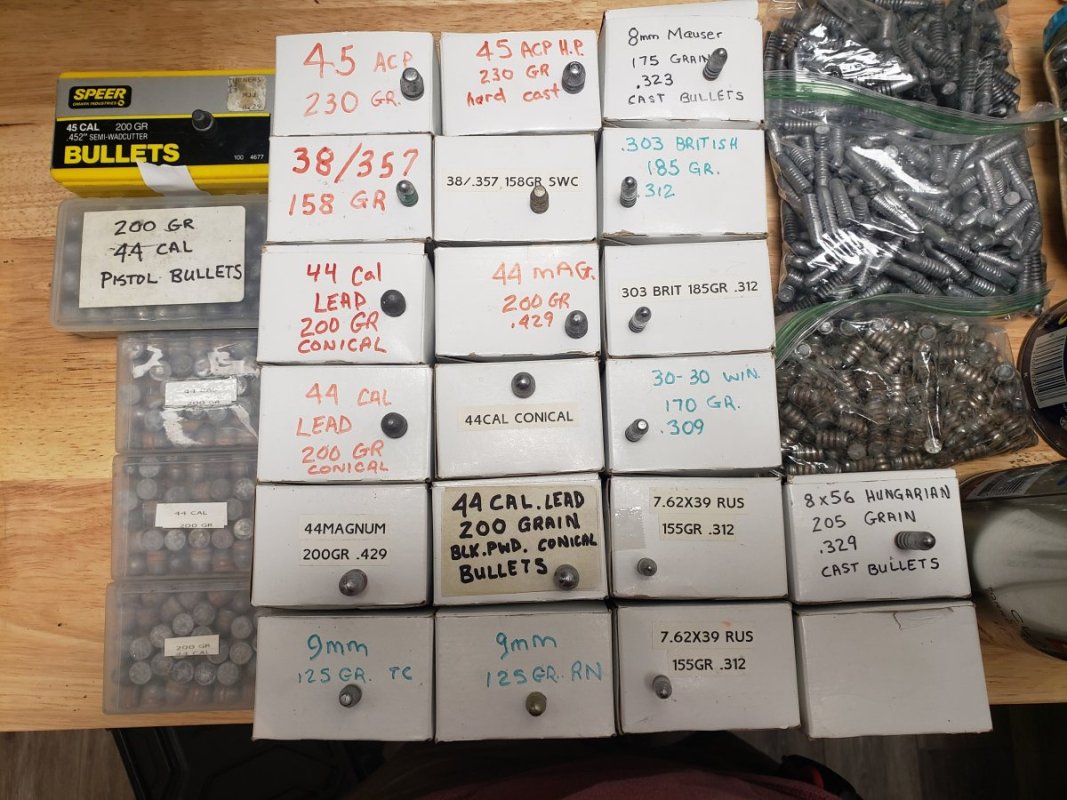Been experimenting with mid range powders( cause I have a lot)
Red Dot , SR 7625, Unique with 147gr flat point bullets. Can't find a lot of specific data for OAL, because I actually use a couple of custom 9mm bullets. Just wondering about general observations and experience with OAL and these powders. I've moved OAL around some and can't find much difference. I'm loading kinda light, 850-900 fps.
I also wonder if groups would tighten up if I pushed them harder and got pressures up.
I'm not a novice. I know about published data.
Also interested in your experience with WSF and CFE Pistol and 147gr lead.
Red Dot , SR 7625, Unique with 147gr flat point bullets. Can't find a lot of specific data for OAL, because I actually use a couple of custom 9mm bullets. Just wondering about general observations and experience with OAL and these powders. I've moved OAL around some and can't find much difference. I'm loading kinda light, 850-900 fps.
I also wonder if groups would tighten up if I pushed them harder and got pressures up.
I'm not a novice. I know about published data.
Also interested in your experience with WSF and CFE Pistol and 147gr lead.









